In the Studio: Maggie Michael
“My work has a vocabulary of marks and pours and what they might mean to me in p...
Application is open through May 31 for 2025 Residencies at the Joan Mitchell Center!

Nicholas Galanin is an artist based in Sitka, Alaska, and a 2023 Joan Mitchell Fellow. We interviewed him about his work and creative practice in February 2024. The following is an edited transcript of that conversation.
My work is deeply connected to my culture, to land, history, the present moment, and future possibilities—envisioning new futures. I consider myself a multidisciplinary artist. I work in all mediums, and I start with concepts, generally.
I'm Tlingit and Unangax̂, and I come from a history of artists who are totem carvers in our community, and jewelers. I was trained in my cultural art form, which is a very specific visual language that's been here since time immemorial. Through that work, I started to understand my ancestry, my connection to place, and the knowledge that holds. That learning is ongoing. It's life work for me.
I've noticed, through the engagement of the world right now, how romanticized that culture and history is, and the constraints that are put on it by outside perspectives and institutions. So, I've seen the necessity to venture off and create work that represents experience now, bringing that into global conversations.
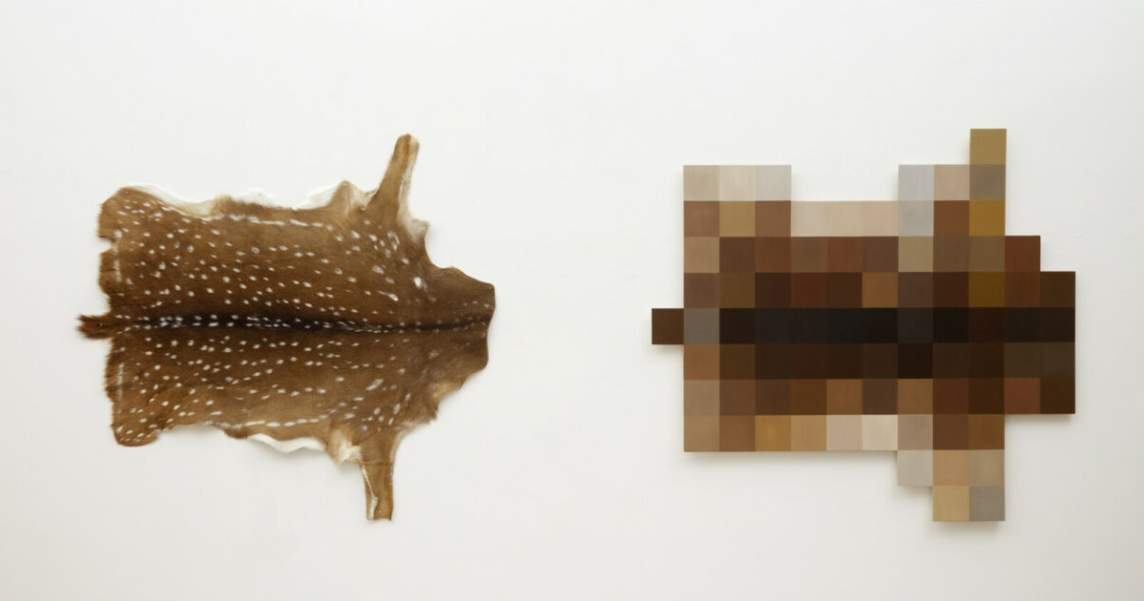
Some of my projects are small in scale, and are worn on the body. Some are grand in scale, and take time. Some are site-specific, where I work with the history of a place and the community local to that space. There are constraints that we have to work around as artists, always—whether it's budget, time, location, resources, whatever. I’m always navigating those realities. I like to remain open, and consider all possibilities along the way.
I recently did a project for Davidson College in North Carolina. This was during COVID, so it was a year-long outdoor project that became collaborative with the community in a way, through the process of it. It was in the same vein of work that I did in 2020 for the Biennale of Sydney, Shadow on the Land, which was an excavation and bush burial—excavating the shadow of the Captain Cook monument and memorial, in anthropological form.
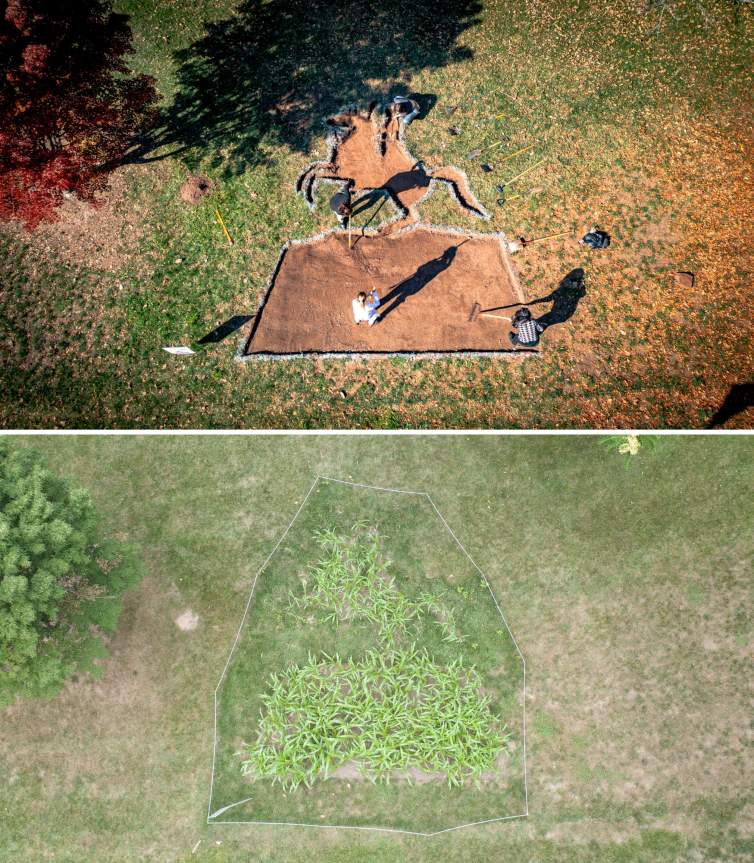
For the project at Davidson, I excavated the shadow of Andrew Jackson, who is a highly problematic figure in American history, connected to oppressive colonial actions towards indigenous people and enslaved Black Americans. I broke the soil in the shape of a monument to Andrew Jackson, and then cultivated and grew Catawba corn in that soil. Catawba is a local indigenous community there in North Carolina, and the corn is a medicinal sustenance that had great importance to the community’s being and survival. That seed was thought to have been extinct, but years back, somebody found the strain of that corn. Since then, the community has been trying to grow a seed bank for it.
We planted the corn over the course of the season, and it sprouted into stalks. The title of the piece was Unshadowed Land, with the concept that the corn would be able to survive and grow under the shadow of colonial violence and history. For an indigenous community to be able to thrive safely or not is a reflection of our times in certain ways. Then we worked with the agriculture department at the college to harvest a larger field of catawba corn. At the end of the project, the corn was all harvested by the Catawba community and it was shared as a feast. Some of the people had never tasted that corn before.
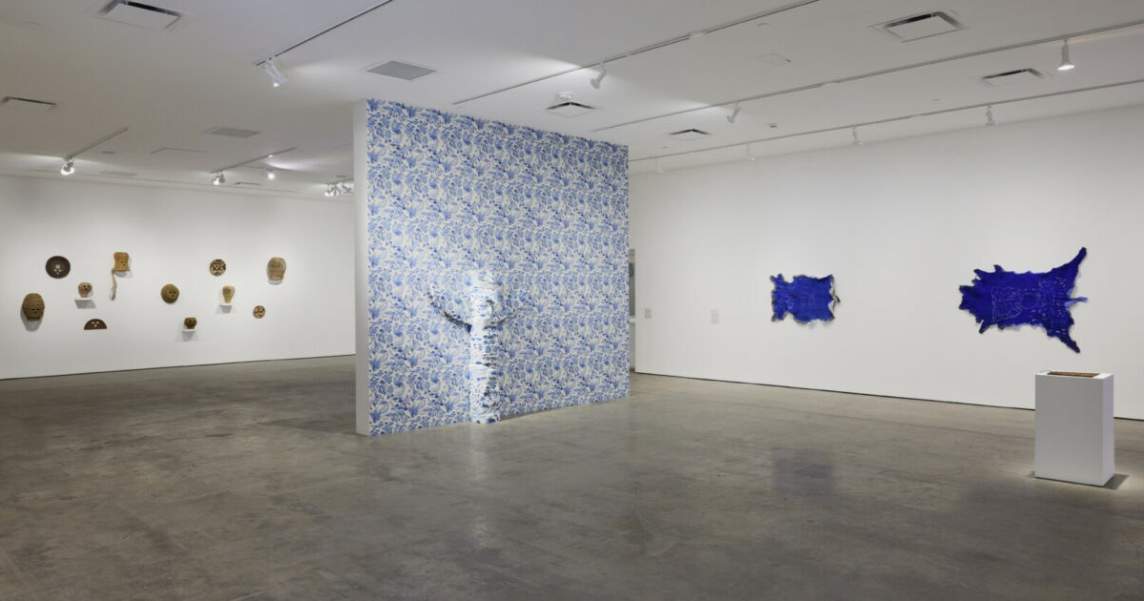
I had a recent exhibition at SITE Santa Fe, which closed in February. It included multiple projects—sculptures, installation work, and videos. The exhibition also included a new commission, Neon American Anthem, which is a three-part neon work.
I first created a white version of Neon American Anthem (White) for the Seattle Art Museum. It was a response to the museum’s contemporary American Art collection galleries, which didn't really have any indigenous voice at all—not uncommon to a lot of these institutional spaces. Next door to that, in the same gallery, there was the Native American Art gallery, which had a lot of our anthropological cultural objects that were stolen or removed from our communities, and don't really belong in that institution.
My initial project proposal for the Seattle Art Museum was to remove all the Native American objects from display. Ultimately, it’s a conversation about sovereignty of who gets to view our objects, and about how they're shared and cared for, with an end goal of returning them back to their community. Seattle Art Museum rejected that proposal for a few reasons, including that they said the objects are too fragile to move, which is not the case (as some of the objects were removed months later due to new federal regulation).
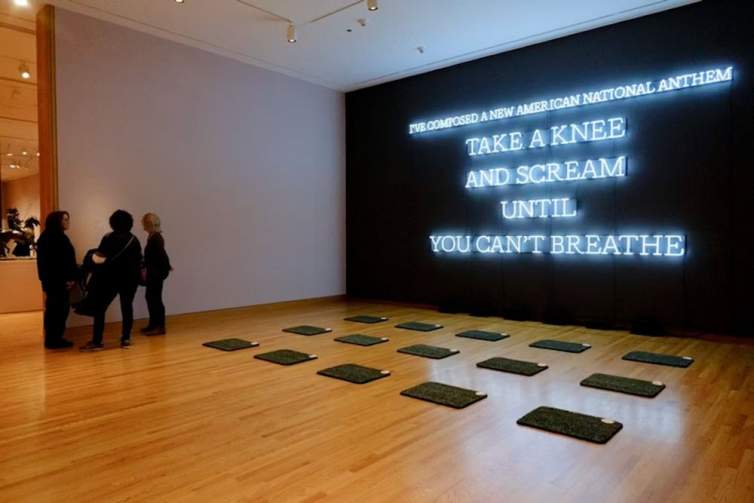
My following proposal was a neon work, which is an engagement with the entire institutional space. This piece is a response to violence in America in different ways—a response to patriotism and nationalism, in the form of an anthem. The work calls for audience participation. On the floor, there are several welcome mats placed out, offering a place to kneel, in catharsis. The text on the wall in white neon says, “I’ve composed a new American national anthem: Take a knee and scream until you can’t breathe.” It references Kaepernick, for example—kneeling in protest—and also George Floyd and the time after his death. The welcome mats provide a somewhat uncomfortable place to kneel, but also could be a reference to suburban existence in these spaces.
In the Seattle Art Museum, many people from different backgrounds participated. It doesn't matter if your political beliefs are this or that—everybody has some catharsis to release, I suppose. It was challenging for the institution and the museum because they didn't know what to do with the activated work, which ultimately filled the venue with people singing the anthem (screaming).
At first, the Seattle Art Museum tried to throttle the work. They tried to change my artist statement and work with me to say, "Can we do this or that?" Then they started to try to figure out other ways to contain it. I'd get emails from viewers saying, "The security guard told me just one scream per customer." Clearly challenging at the time for them.
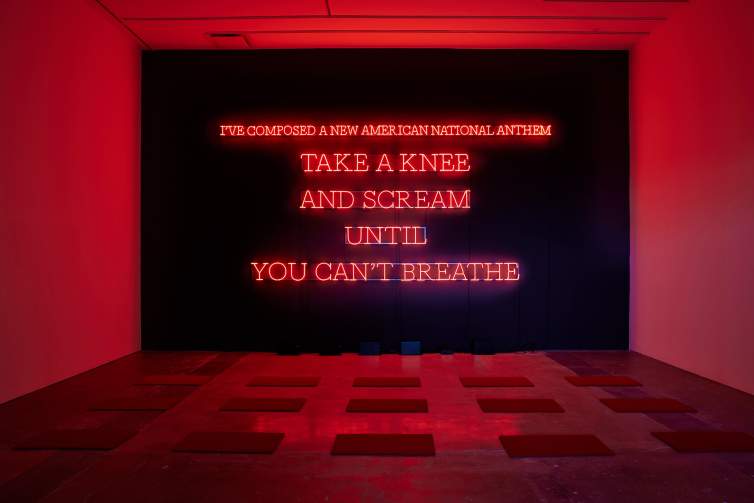
I created another version of Neon American Anthem (Red), which was installed at SITE Santa Fe. This one had red text, and the whole room had a buzz and glow. The welcome mats were also red. With this iteration, it was entirely embraced by the institution. Many people participated in it and responded to it. And now, for the third part of the project, there's a blue version being fabricated that will be installed at the Liberty Museum in Philadelphia this year. So, red, white, and blue. I don't know how they're going to respond to it, so we'll see. They have to prepare and notify viewers, "This is an installation that is activated by you."
As with this project, my work often has layers, so people can enter it from many different spaces and perspectives, and receive something from it, hopefully. The work creates room for dialogue and understanding, but it's never intended to be received in any one way.
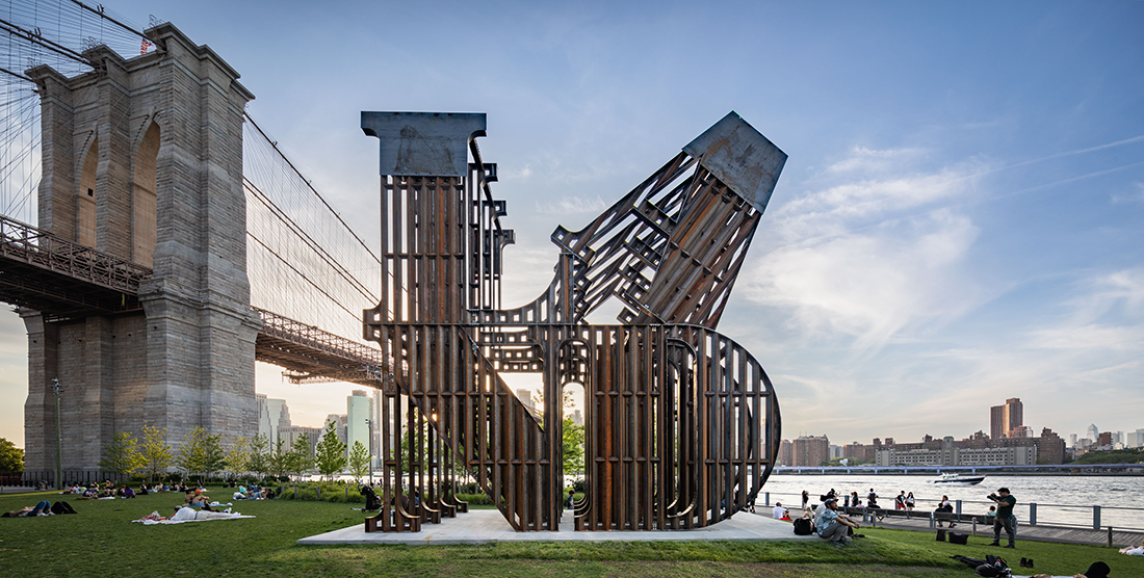
It has been a busy year already, and I have a lot of new projects and travel on the horizon. I’m currently working on an outdoor sculptural work in New Zealand. I have some speaking engagements coming up, and I'm working on a few public art proposals that I've been invited to submit: Public Art Abu Dhabi Biennial, Boston Public Art Triennial, Museum of Montclair, and a few others.
I have a solo show at the Baltimore Museum of Art that opens in July, so new work is being made for that right now. And there’s another project that I’ve been working on in Santa Fe. Surrounding that, we're doing a long-term Land Back collaboration and project with SITE Santa Fe and Lucy Lippard, who's based out there.
I also have my first solo museum show in Europe coming up in 2025 in Munich, Germany. This will be all new work. And I’m working on a new record that's been ongoing since February. It's really fun work, just slow-going. I work on it when I can.
I’m also working on a multi-year collaborative project with a choreographer that we're just kicking off, and it's a long, slower project. I've never worked with a choreographer before, so I'm excited. We're just figuring it out. We've been meeting a few times, to get a little more concrete on how our practices cross over to each other. We're talking about funding possibilities for that. I'm going to start doing some studio visits with the dancers of that dance company, and then we'll keep going from there.
Interview and editing by Jenny Gill. Learn more about Nicholas Galanin’s work at galan.in and on Instagram.